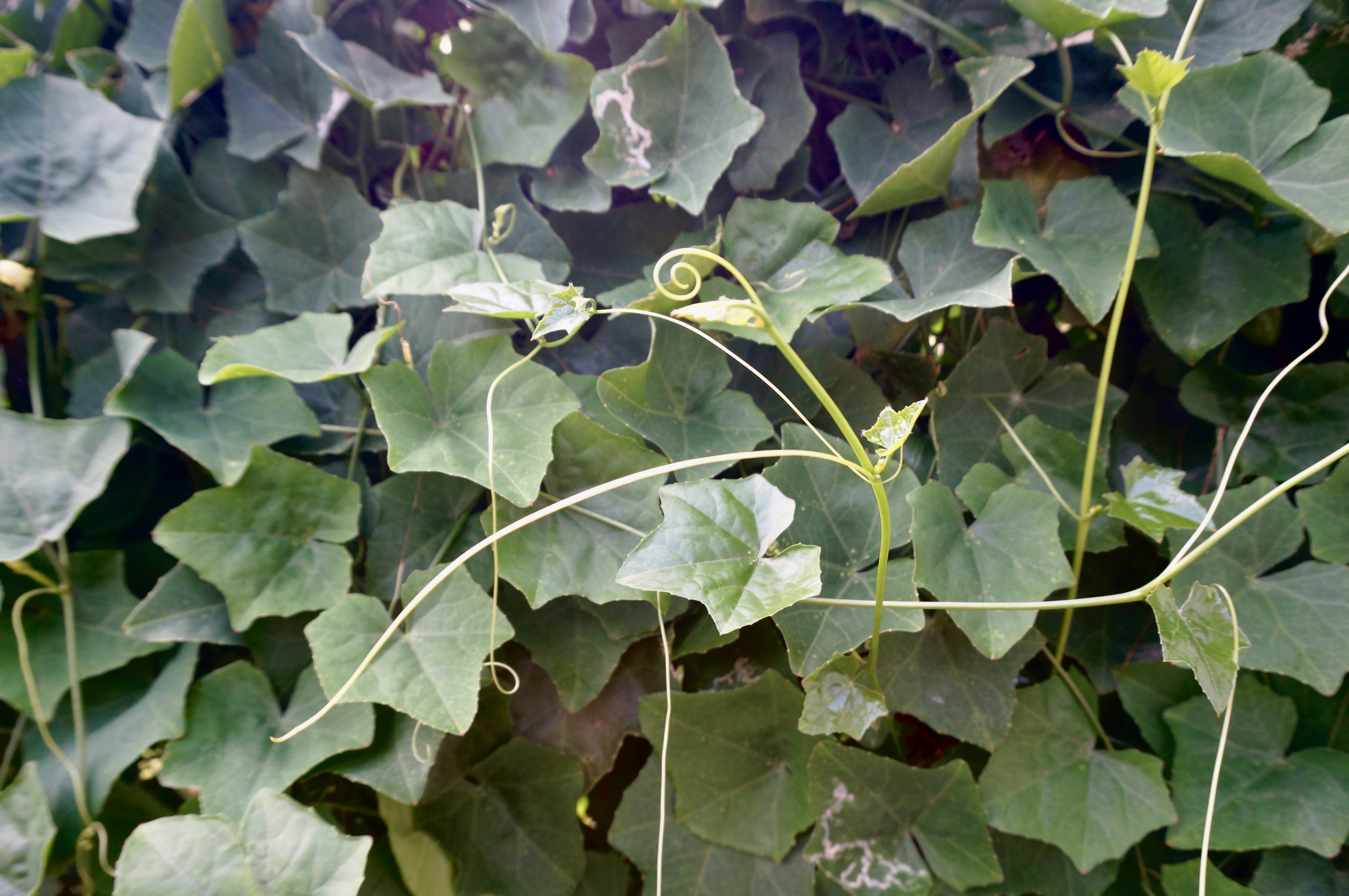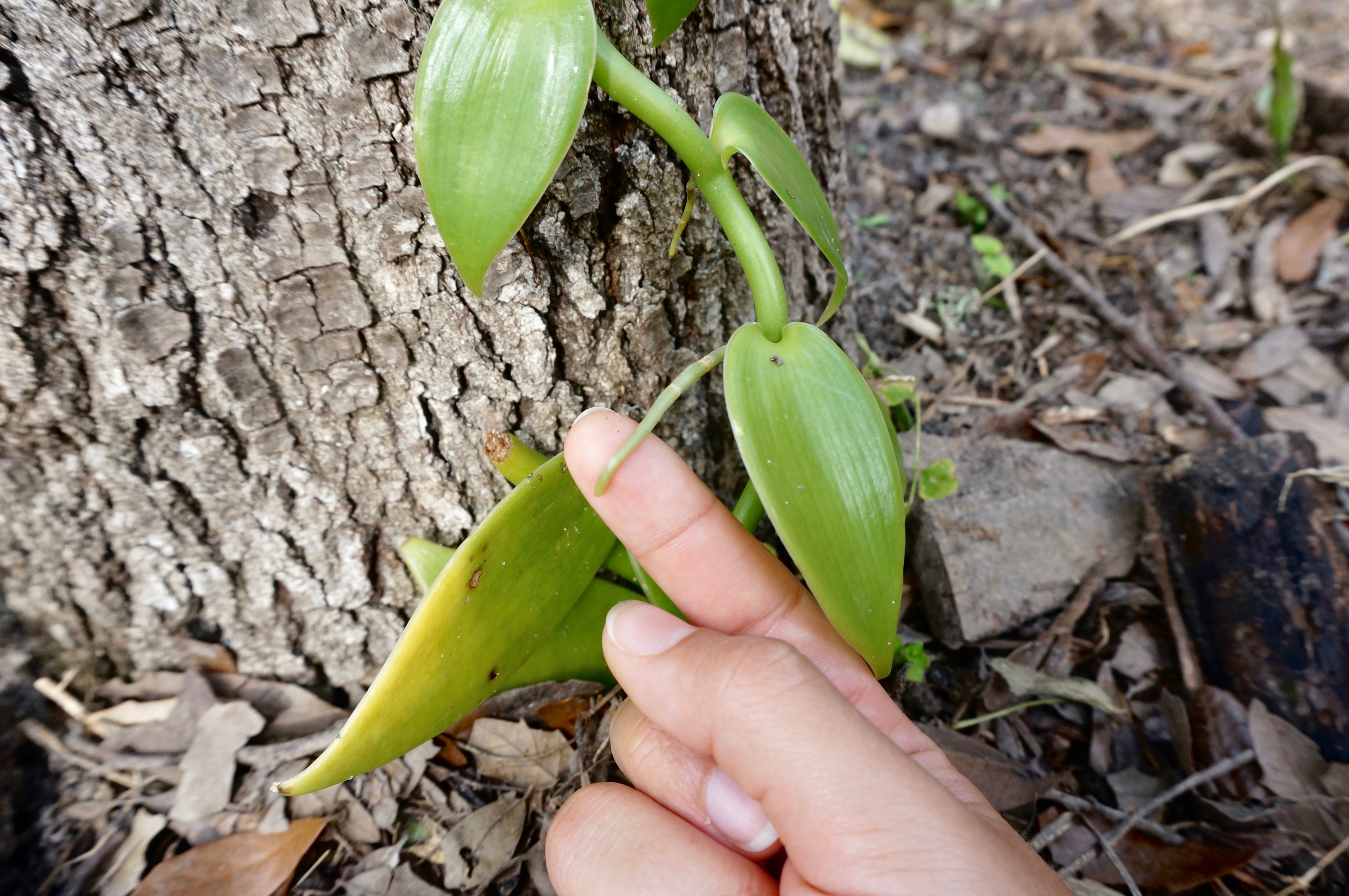All Posts > Blog

The Plants that Take Over
Vining plants grow too fast, too much, and too wild. They don’t bother growing strong trunks to support themselves, so they rely on their neighbors for support. All that energy that they would have spent growing a tough stem or trunk, instead is spent searching for sunlight and reproducing. In a couple weeks a strong vine can easily reach the top of a tall tree or sprawl on the ground and choke out the surrounding plants.
How Vining Plants Grow
Some vines grow up and other grow along the ground. Many vines twine, others have tendrils, and some even have arial roots. Twining vines climb with the actual stem of the plant that wraps around a support, while plants with tendrils have small extensions that curl around a support. Vines with arial roots attach themselves to supports with their roots. Vines that grow on the ground like sweet potatoes and pumpkins are not the best at climbing up, however, they can climb up a couple of feet if given a support. Below are some examples.
Climbing Vines
Twining - The yard long green bean stem wraps around its support.


Tendrils - The ivy gourd vine has tendrils that curl around a support.


Arial Roots - The vanilla orchid is a vining plant that uses arial roots to attach itself to a support. I recently planted one under my oak tree and decided to start a video series about growing my vanilla orchid. Hopefully, I will be able to harvest my own vanilla beans one day!

Here is the first video!
Sprawling Vines
Twining - The sweet potato can climb up a support by wrapping around it like the yard long green bean, but it prefers to grow on the ground.

Tendrils - The pumpkin grows on the ground, but it can attach itself to a support with the help of its tendrils.


The Pros
- Vines are fast growers and, therefore, produce quickly; for example, my yard long green beans are starting to produce after I planted the seeds around three weeks ago.
- Vines, especially ground vines, are also hardy plants that can compete with weeds.
- Many vines are perennials, so they are able to thrive with less care as an annual.
- They can be trained up a trellis to provide shade, privacy, or hide something unsightly.
- They can be grown up and therefore work well for small gardens.
- Many vines can be easily propagated by cuttings.
The Cons
- They can require regular pruning and taming to prevent them from taking over other plants in the garden.
- Vines are sometimes difficult to prune and maintain since the stems become tangled.
- They may require a trellis or support, so more effort and material is needed to grow the plant.
- Vines sometimes are severely effected by vine borers.
- They don’t work well for chop and drop because the cut stems can root, and begin growing in unwanted places.
Using Trees as Supports for Climbing Plants
Building supports for climbing plants can be a hassle, making it much easier to just use an existing tree as the support. However, special care needs to be taken before doing this. Vines are meant to climb up to the top of a tree and cover its canopy, so they can easily shade out a live tree. The best trees to use as supports are ones that are dead or not of importance. If using a fruiting tree as a vine support, then special care needs to be taken to prevent the vine from overwhelming the tree.
I personally would avoid growing any vining plants on fruiting trees for this reason. Growing vines on supports that are too tall can also pose an issue when harvesting. If a shorter support is an available option it is preferable to go with the shorter support if you will be directly harvesting off of the vine.
I absolutely love growing vining plants because they are such abundant producers. I think we should all be growing vining plants. We just need to make sure they don’t take over our gardens!
Have you ever tried growing vining plants? If yes, then which ones did you grow? Did they take over your garden? What kind of support did you use for the plant? Was it a fruit tree? Let me know down below in the comments. If you like this post be sure to subscribe so you don’t miss out on another one! You can also go and check out some of my other videos on my YouTube channel here. Thank you for reading!

I grow Passionfruit. That is one aggressive vine! Delicious tho, and one CRAZY producer. You'll get hundreds of fruit from one vine.
Awesome! What trellis do you use for the passion fruit? I have a few plants that are about a year old growing on my chain link fence. One of them is doing way better than the others. It is already flowering and it was grown from seed. I am so excited. Hopefully I get fruit soon. Also what do you do with the fruit? I was hoping to make some jam.
Wow, such a great description of the joys and headaches of vines! I always have mixed feelings about planting vines, for all the reasons you describe. One combo I've seen work well is yam (ñame) vines climbing yuca plants - the yuca holds its leaves out so far from the main stem that they don't get shaded by the yam leaves hugging the yuca's stems. And the yam gets enough sunlight to make good tuber production. I haven't experimented with growing other vines using yuca as a trellis, but it might be worth experimenting with it. Thanks for a nice post that's got me thinking about it.
Thank you for your response! I haven't thought about growing vines on yuca. I haven't grown yuca before though. Maybe it would work best with the twining vines instead of the one with tendrils. The tendrils attach to anything around it and it might end up shading the yuca out. The yams are twining vines so I think that's why it works well.